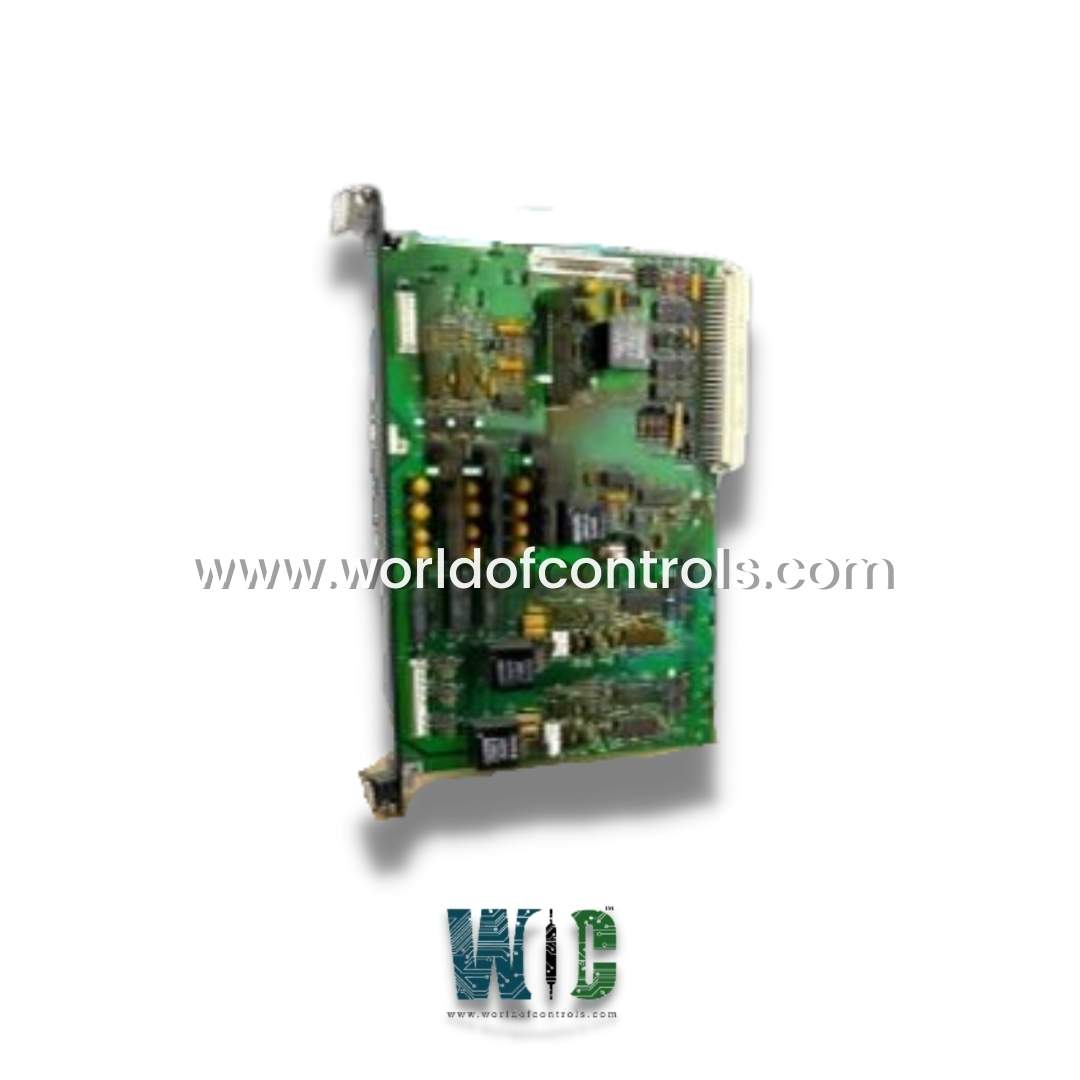
World Of Controls understands the criticality of your requirement and works towards reducing the lead time as much as possible.
IS200SCNVG1A - Signal Conditioning and Networking Card is available in stock which ships the same day.
IS200SCNVG1A - Signal Conditioning and Networking Card comes in UNUSED as well as REBUILT condition.
To avail our best deals for IS200SCNVG1A - Signal Conditioning and Networking Card, contact us and we will get back to you within 24 hours.
SPECIFICATIONS:
Part Number: IS200SCNVG1A
Manufacturer: General Electric
Series: Mark VI
Board Type: Signal Conditioning and Networking Card
Input Voltage Range: 3.3V to 5V DC
Input Channels: 1 Tilt Channel
Clock Frequency: Up to 200 MHz
Output Filter: 0.15 sec
Power Standard Version: +8 to +24 VDC
Operating Temperature Range: -25 to +70°C
Dimensions: 25 mm x 25 mm x 5 mm
Mounting Type: Surface-mount technology
Repair: 3-7 Day
Availability: In Stock
Country of Origin: United States
FUNCTIONAL DESCRIPTION:
IS200SCNVG1A is a Signal Conditioning and Networking Card manufactured and designed by General Electric as part of the Mark VI Series used in GE Speedtronic Turbine Control Systems. A Signal Conditioning and Networking Card is a specialized electronic module used in turbine control systems to process raw sensor signals and enable seamless communication between various control units. It ensures that sensor outputs are accurately conditioned, converted, and transmitted to the turbine control system while maintaining signal integrity, electrical isolation, and noise immunity. Additionally, the networking functionality of the card facilitates real-time data exchange, remote monitoring, and integration with industrial communication protocols such as Modbus, Profibus, Ethernet/IP, and CAN Bus.
FUNCTIONS AND FEATURES OF SIGNAL CONDITIONING:
A Signal Conditioning and Networking Card performs several critical functions to ensure the accurate and reliable operation of turbine control systems. One of its primary functions is signal amplification, where it boosts weak sensor signals to match the required input levels of controllers and monitoring systems. This is particularly useful for sensors that generate low-voltage or low-current outputs.
Another key function is signal filtering, which removes unwanted noise and electromagnetic interference (EMI) from sensor signals. Filtering techniques such as low-pass, high-pass, and band-pass filtering are applied to eliminate electrical disturbances and enhance measurement accuracy. The card also provides electrical isolation, which prevents ground loops and protects control systems from voltage spikes, reducing the risk of damage caused by high-voltage transients.
Signal conversion is another essential feature, where the card converts signals from one format to another, such as analog-to-digital (A/D) conversion for digital processing or current-to-voltage conversion based on system requirements. Additionally, the card includes linearization capabilities to correct nonlinear sensor outputs, ensuring precise and consistent measurements.
INSTALLATION:
The installation of a Signal Conditioning and Networking Card must be performed according to industry standards to ensure optimal performance and safety. The card is typically mounted inside a turbine control panel, securely housed within a rack or DIN rail enclosure to protect it from mechanical vibrations, dust, and moisture. Proper grounding and shielding techniques must be applied to minimize electromagnetic interference.
Before installation, it is essential to verify compatibility with sensor types, signal ranges, and communication protocols used in the turbine system. Wiring connections should be made following color-coded and labeled terminals, ensuring proper signal flow between sensors, controllers, and communication interfaces. Power supply requirements, typically 24V DC or 5V DC, must be checked to avoid voltage mismatches that could damage the circuitry.
OPERATION:
The Signal Conditioning and Networking Card continuously processes input signals from field sensors and transmits the conditioned data to the turbine control system in real-time. The card's internal microprocessor or FPGA-based signal processing unit ensures fast and accurate computations, enabling real-time control decisions.
The signal conditioning circuit amplifies and filters sensor signals, ensuring that only clean and stable data reaches the control system. The analog-to-digital converter (ADC) converts sensor signals into digital form for further processing and transmission. Additionally, fault detection and diagnostic features monitor signal integrity, detecting anomalies such as sensor failures, cable disconnections, and signal drift.
WOC has the largest stock of OEM Replacement Parts for GE Speedtronic Turbine Control Systems. We can also repair your faulty boards and supply unused and rebuilt boards backed up with a warranty. Our team of experts is available round the clock to support your OEM needs. Our team of experts at WOC is happy to assist you with any of your automation requirements. For pricing and availability on parts and repairs, kindly contact our team by phone or email.
What is a Signal Conditioning and Networking Card?
A Signal Conditioning and Networking Card is an electronic module used in turbine control systems to process and enhance raw sensor signals while enabling communication with control networks. It ensures accurate data acquisition, signal integrity, and real-time connectivity with PLCs, DCS, and SCADA systems.
What is the purpose of signal conditioning in turbine control?
Signal conditioning enhances raw sensor signals by performing amplification, filtering, isolation, and conversion. This ensures that turbine control systems receive clean and accurate data for monitoring and decision-making, minimizing errors caused by noise or weak signals.
What types of signals can a Signal Conditioning and Networking Card process?
A Signal Conditioning and Networking Card is designed to handle multiple signal types essential for turbine control. It supports analog signals such as 4-20mA current loops, 0-10V voltage signals, and ±5V inputs for pressure, flow, and vibration monitoring. Additionally, it processes digital signals, including pulse, frequency, and RS-485 serial data, which are commonly used in speed and position sensing.